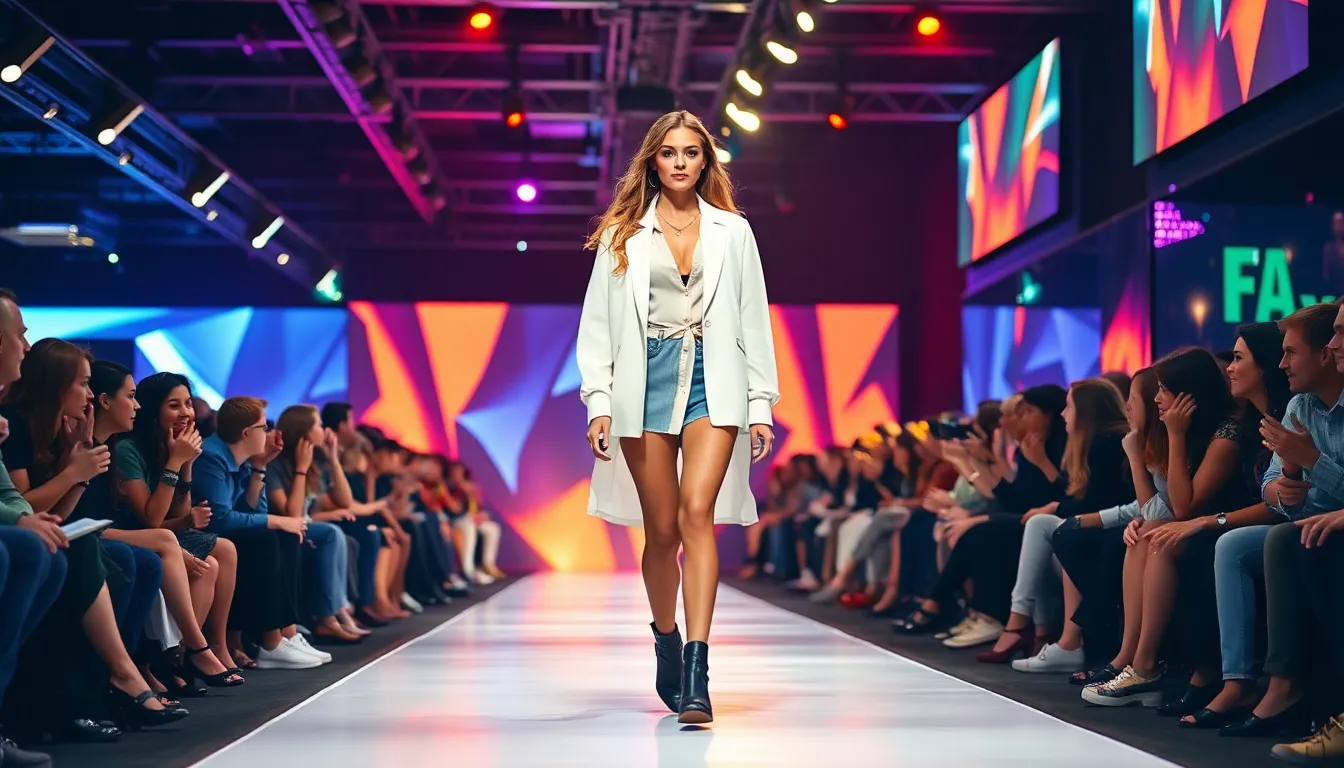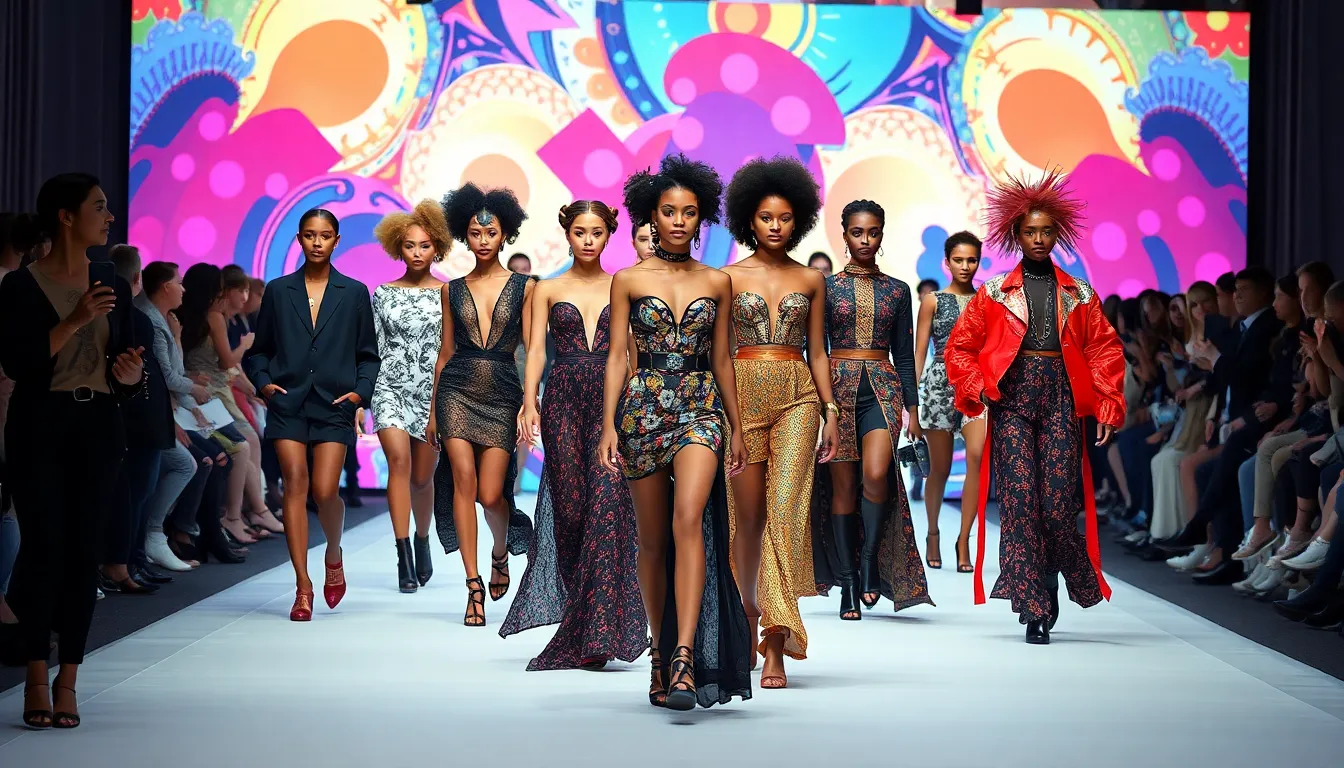Fashion shows are the heartbeat of the fashion industry, showcasing creativity and innovation on a grand scale. These vibrant events not only highlight the latest trends but also serve as a platform for designers to express their artistic visions. Each show transforms ordinary spaces into extraordinary realms of style, captivating audiences with stunning visuals and breathtaking designs.
As models strut down the runway, they bring to life the intricate craftsmanship and bold concepts that define each collection. Fashion shows create a buzz that ripples through the industry, influencing everything from retail to street style. With every season, they set the stage for what’s next, making them essential for fashion enthusiasts and industry insiders alike.
Table of Contents
ToggleOverview of Fashion Shows
Fashion shows hold a pivotal role in the fashion industry, acting as dynamic platforms where creativity merges with artistry. These events spotlight designers’ visions while influencing trends across various sectors.
History of Fashion Shows
Fashion shows trace back to the mid-19th century, with early examples emerging in Europe. The first recorded fashion show occurred in Paris in 1903, organized by visionary designers to promote their collections. Initial shows featured simple displays of garments, focusing more on fabrics than choreography. By the 1920s, fashion shows began incorporating music and staged performances, enhancing their appeal and sophistication.
Evolution of Fashion Shows
Fashion shows have continuously evolved, reflecting changes in culture, technology, and consumer behavior. The 1980s saw the rise of supermodels, leading to shows that emphasized glamour and spectacle. In the digital age, livestreaming and social media transformed traditional formats, allowing global audiences to engage with events in real time. Today, sustainability and inclusivity shape modern fashion shows, encouraging diverse representations and environmentally conscious designs.
Key Components of a Fashion Show

Fashion shows rely on several critical components that contribute to their success and appeal. Key elements include venue selection, model casting, and designer participation. Each aspect plays a vital role in creating an impactful event.
Venue Selection
Venue selection significantly influences the atmosphere and presentation of a fashion show. Urban settings, historical buildings, and unique outdoor spaces provide distinctive backdrops that enhance the storytelling of a collection. Ideal venues accommodate large audiences and facilitate seamless movement for both models and guests. Event planners often consider accessibility, ambiance, and logistics when choosing a location to ensure optimal audience engagement and experience.
Model Casting
Model casting involves selecting individuals who embody the aesthetic and vision of the designer’s collection. Successful casting directors evaluate models based on criteria such as physical fit, versatility, and the ability to portray the intended brand image. Diverse representation has gained importance, emphasizing models of various ethnicities, body sizes, and genders. This inclusivity resonates with the audience and successfully reflects current societal values within the fashion industry.
Designer Participation
Designer participation is a cornerstone of any fashion show. Renowned and emerging designers showcase their latest collections, often introducing innovative designs and concepts. Designers frequently collaborate with other creative professionals, including stylists and makeup artists, to achieve a cohesive vision. By participating in fashion shows, designers gain exposure, influence trends, and engage directly with industry stakeholders and consumers, solidifying their presence in the competitive market.
Types of Fashion Shows
Fashion shows come in various formats, each serving a distinct purpose within the industry. Understanding these types helps to appreciate their impact on fashion trends and consumer behavior.
Haute Couture
Haute couture refers to high-end, custom-fitted clothing produced by fashion houses. These exclusive shows exhibit intricate designs and exceptional craftsmanship, showcasing limited-edition pieces often created for individual clients. Designers typically present their collections in intimate settings, emphasizing luxury and artistry. Established by the Chambre Syndicale de la Haute Couture, these shows require designers to meet specific criteria regarding craftsmanship, creativity, and exclusivity.
Ready-to-Wear
Ready-to-wear fashion shows feature collections created for mass production. These shows cater to a wider audience, balancing high fashion with accessibility. Designers aim for a more commercial presentation, often showcasing cohesive looks that represent seasonal trends. Ready-to-wear collections become available to consumers shortly after their debut, influencing retail options and everyday style. Major fashion weeks, such as New York, Milan, and Paris, prominently feature ready-to-wear shows.
Sustainable Fashion Shows
Sustainable fashion shows emphasize eco-friendly practices and ethical design. These events highlight brands prioritizing sustainability, using recycled materials and focusing on fair labor practices. By showcasing collections that advocate for environmental awareness and responsible consumption, these shows challenge traditional fashion norms. Designers often integrate innovative techniques and sustainable practices, attracting a growing audience concerned about the environmental impact of their clothing choices.
The Impact of Fashion Shows
Fashion shows significantly influence cultural and economic aspects of society. They shape trends, inspire creativity, and bolster financial growth within the industry.
Cultural Influence
Fashion shows serve as cultural barometers, reflecting societal changes and shifting values. Designers often draw inspiration from art, history, and current events, transforming cultural narratives into compelling visual statements. This interplay fosters conversations regarding identity, politics, and lifestyle. For example, shows that spotlight diverse models promote inclusivity, challenging conventional beauty standards and encouraging representation. Moreover, fashion shows impact not only designers and models but also audiences, inspiring personal style choices and fostering connections among fans of different cultures.
Economic Significance
Fashion shows drive substantial economic impact within the fashion industry. Each event generates revenue through ticket sales, sponsorships, and merchandising, significantly benefiting designers and venues. A study by the Fashion Institute of Technology shows that fashion weeks in cities like New York and Paris contribute millions to local economies, supporting hotels, restaurants, and transportation services. Additionally, successful fashion shows can lead to increased sales for participating designers, as retailers and consumers respond to showcased collections. The rise of digital platforms amplifies this effect, allowing brands to reach global markets and further enhance their economic influence.
Fashion shows are more than just glamorous events; they’re vital to the fashion industry’s evolution and cultural dialogue. By showcasing creativity and innovation, they not only highlight designer talent but also reflect societal values and trends. The shift towards inclusivity and sustainability is reshaping the landscape, encouraging brands to embrace responsible practices.
As fashion shows continue to adapt to the digital age, their influence expands, reaching global audiences and transforming how fashion is consumed. These events remain essential for fostering connections within the industry and inspiring future generations of designers and consumers alike. The vibrant world of fashion shows will undoubtedly continue to evolve, leaving an indelible mark on both culture and commerce.

